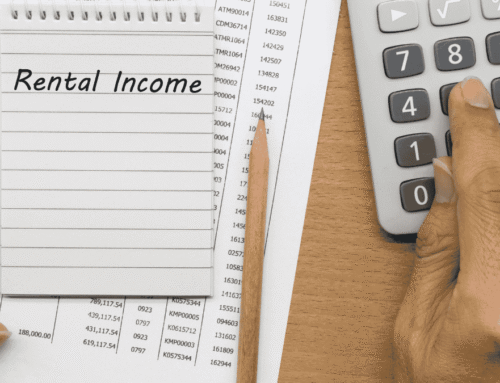Is Buy-to-Let in the USA a Good Investment? Pros & Cons
Is Buy-to-Let in the USA a Good Investment? Pros, Cons & Strategies
In the year to April 2025, UK citizens purchased 3,000 residential properties in the United States. That’s a whopping $2 billion in real estate purchases, marking a year-on-year increase of around 233%. Now, the U.S. has always been a popular destination for Brits to buy holiday homes, but according to this data, 73% of these purchases were for investment purposes. Overall, UK citizens now make up the 5th biggest group of foreign buyers of U.S. residential real estate globally.
So why the sudden spike in interest from UK property investors? Well, I’m British, and I’ve bought over 120 rental properties in the U.S., so to me it’s a no-brainer. But in the conversations I’m having daily with my UK clients, I’m hearing the same specific problems mentioned over and over again. Many of them feel that recent changes to UK law and the tax system has made buy to let in the UK unviable. In this guide, I’m going to lay out the differences between buy to let in the UK, and USA, so you can decide for yourself if buy to let in the USA is a good investment.
Key Takeaways
- UK Challenges: New taxes and the Renters Rights Bill are increasing burdens on UK landlords.
- USA Opportunity: The U.S. offers diversification, potentially higher yields, and more landlord-friendly environments.
- Tax Differences: U.S. tax benefits like depreciation and mortgage interest deductions can offset income, unlike recent UK changes.
- Financing Advantage: U.S. DSCR loans offer a property-centric approach, often simpler for foreign investors.
- Strategic Shift: Understanding local market data and building a strong local team is key to success in the U.S.
Investment Properties: Browse Turnkey Rental Properties For Sale in Our Online Portal
The Shifting Sands for UK Landlords: Why Many Are Looking Overseas
For years, buy-to-let in the UK has been a popular and profitable way for smaller investor to grow their wealth. However, recent government changes seem to have significantly altered the playing field. From what I’m being told by UK landlords, buy to let is now looking far less attractive. A lot of the landlords I’ve spoke to have personally felt the squeeze, and it’s a major reason why I intend to continue to grow my rental portfolio in the U.S.
The Impact of Section 24 (Mortgage Interest Relief)
One of the most significant blows to UK landlords was the phased restriction of mortgage interest relief, commonly known as Section 24 of the Finance Act 2015. Before this, landlords could deduct all their mortgage interest from their taxable income. Now, you only receive a basic rate (20%) tax credit on your finance costs. This means:
- Tax on Gross Income: You are taxed on your gross rental income, even if a large portion goes towards mortgage interest. This can push you into a higher tax bracket, significantly reducing your net profit.
- Reduced Profitability: For higher-rate taxpayers, this change has drastically cut into profitability, making some previously viable properties unprofitable.
This change has been a huge driver for UK landlords to reconsider their strategies. I think this is perhaps one of the main drivers leading them to explore international markets where tax structures might be more favourable.
Related: How to Buy U.S. Investment Property as a Non-Resident
The Renters Rights Bill: A New Era of Tenant Power
The UK government’s Renters Rights Bill (now progressing through Parliament) aims to improve renters’ rights. We can all agree that’s a good thing in theory. But the actual changes that are set to take place actually create significant new challenges for UK landlords. Here are some key elements:
- Abolition of Section 21 ‘No-Fault’ Evictions: This is perhaps the most impactful change. Landlords will no longer be able to evict tenants without a specific, legally defined reason. While new possession grounds are being introduced, regaining your property will likely become a more complex and potentially lengthy process.
- Mandatory Periodic Tenancies: Fixed-term tenancies will be abolished. All tenancies will become periodic from day one, meaning tenants can give just two months’ notice to leave at any time. This reduces security for landlords regarding tenancy length.
- Strengthened Tenant Rights:
- Pets: Landlords cannot unreasonably refuse a tenant’s request to have a pet, though they can require pet insurance to cover potential damage.
- Discrimination: It will be illegal to discriminate against tenants receiving benefits or with children.
- Rent Increases: Rent increases will be limited to once a year and must be in line with market rates, with no ability to write in future increases into contracts.
- Awaab’s Law: This sets clear timeframes for landlords to address serious hazards in properties, increasing compliance pressure.
- Increased Rent Arrears Threshold: The mandatory ground for eviction due to rent arrears is set to increase from two to three months’ arrears, and the notice period for landlords will double from two to four weeks.
- New Ombudsman and Property Portal: A new mandatory Private Renters Ombudsman will be created, alongside a new property portal providing more detailed information about properties.
These changes, while aiming to protect tenants, significantly increase the regulatory burden and potential risks for UK landlords. This makes the market feel less predictable and less favourable for investment. I spoke to a long-time UK landlords recently with 64 properties in the North of England. He’s been building his UK buy to let portfolio for years, but he’s no longer look for his next property. Instead, he’s looking to start building a rental property portfolio in the U.S. That’s just one example, but I can tell you it’s certainly not an isolated conversation.
Related: USA Property Investment for Foreign Buyers [2025 Guide]
Why the USA is Becoming the Go-To for UK Investors
Given the tightening regulations and tax burdens in the UK, it’s no surprise that more and more British investors are exploring property investment in USA. The U.S. offers a stark contrast in many areas, providing opportunities that are becoming harder to find at home. Let’s take a look at some of the headline advantages that are drawing interest from UK investors.
- Market Diversification: The USA is a vast country with diverse local economies. This allows for geographical diversification, spreading risk and capitalizing on different economic cycles.
- Potentially Higher Rental Yields: Many U.S. markets, particularly in the Midwest and Southeast, offer significantly higher rental yields compared to the UK, especially London. This translates to better cash flow.
- More Landlord-Friendly States: While laws vary by state, many U.S. states have more balanced or landlord-friendly regulations regarding evictions and rent control compared to the UK’s increasingly tenant-centric approach.
- Affordable Entry Points: Certain U.S. cities offer much lower property prices than comparable UK cities, allowing investors to acquire more properties for their capital and achieve stronger rent-to-price ratios.
- Tax Advantages: The U.S. tax system offers benefits like mortgage interest and depreciation deductions, which can significantly reduce your taxable income from rental properties, a stark contrast to the UK’s Section 24 changes.
Related: Best Investment Properties in the USA (2025) | Top Cities & Types
UK Buy-to-Let vs. USA Buy-to-Let: A Direct Comparison
Let’s put it side-by-side. Here’s a general comparison of key factors when considering investment in real estate in USA versus the UK.
| Feature | UK Buy-to-Let | USA Buy-to-Let |
|---|---|---|
| Average Property Price | Higher, especially in popular regions (e.g., London). | Varies greatly by state/city; many markets offer significantly lower prices. I personally buy rental properties priced between $150,000 and $35,000 USD. |
| Typical Mortgage LTV | Generally 75% (25% deposit minimum), some lenders require up to 40% deposit. | Up to 75 for DSCR loans for foreign nationals. |
| Mortgage Interest Relief | Restricted to 20% basic rate tax credit (Section 24). | Mortgage interest is a deductible expense against rental income. |
| Rental Yields | Typically 3-5% (lower in London). | Can be 8-10%+ in cash-flow focused markets (e.g., Midwest). |
| Stamp Duty / Purchase Tax | Higher rates for BTL (5-17%), plus 2% non-resident surcharge. | In Ohio, where I own some rentals, transfer taxes are $1 per $1,000 of property value ($200 for a $200,000 property) |
| Depreciation Tax Benefit | Not applicable for residential property. | Significant benefit: Property value (excluding land) depreciated over 27.5 years, reducing taxable income. 100% 1st year bonus depreciations also just reintroduced. |
| Eviction Process | Becoming more complex with abolition of Section 21; requires specific grounds. | Varies by state; generally more straightforward and faster in landlord-friendly states. On average, it takes me around 30 to 60 days to evict a tenant – for any reason. |
| Tenancy Terms | Moving towards mandatory periodic tenancies; tenants can give 2 months’ notice. | Fixed-term leases (e.g., 12 months) are standard, providing more stability. I also have some rentals on a month to month lease with 30 days notice. |
Related Best USA Real Estate Investment Companies [Expert Review]
Financing Your US Buy-to-Let: UK Mortgages vs. US DSCR Loans
Financing is a huge part of any buy to let investing strategy. For UK investors, understanding the differences between typical UK buy-to-let mortgages and U.S. DSCR (Debt Service Coverage Ratio) loans is essential.
UK Buy-to-Let Mortgages
In the UK, buy-to-let mortgages are typically interest-only, meaning you only pay the interest each month, not the capital. Lenders assess affordability using “stress tests,” requiring the rental income to cover 125% to 145% of a hypothetical higher interest rate mortgage payment. Your personal income and existing debt-to-income (DTI) ratio can still play a role in approval.
U.S. DSCR Loans
This is where the U.S. offers a distinct advantage for foreign investors. DSCR loans are specifically designed for investment properties and focus primarily on the property’s ability to generate enough income to cover the mortgage payment. U.S. DSCR loans are also fully-amortized. The key benefits for you as a non-resident are:
- No Personal Income Check: Lenders do not typically require proof of your personal income, tax returns, or a review of your personal debt-to-income ratio.
- Property-Based Underwriting: The loan is underwritten based on the property’s Debt Service Coverage Ratio (DSCR), which compares the property’s net operating income to its debt service. A DSCR of 1.25 or higher is often preferred.
- Accessibility for Foreign Nationals: These loans are readily available to non-resident aliens, simplifying the financing process significantly.
- Long-Term Fixed Rates: Many DSCR loans offer 30-year fixed interest rates, providing long-term predictability for your cash flow, which is less common for UK buy-to-let mortgages.
- Amortized Loans: U.S. DSCR loans are fully amortized. That means every mortgage payment actually pays down the balance of the loan. Your U.S. rental property investment isn’t reliant on capital appreciation to grow your wealth – over time, your tenant pays off the mortgage for you and you own the property outright.
| Feature | UK Buy-to-Let Mortgage | U.S. DSCR Loan |
|---|---|---|
| Underwriting Focus | Rental income stress test, personal income/DTI. | Property’s Debt Service Coverage Ratio (DSCR). |
| Impact on Investor DTI | Can impact personal DTI, affecting other borrowing. | No impact on personal DTI. |
| Income Verification | Requires personal income proof (e.g., payslips, tax returns). | Typically no/light personal income verification required. |
| Loan Term | Varies, often 25-30 years. | Commonly 30 years. |
| Rate Fixes | Commonly 2, 3, or 5-year fixed rates, then variable. | Often 30-year fixed rates available. |
| Foreign National Access | Limited options, often stricter criteria. | Widely available and designed for non-resident aliens. |
| Amortization | Loans are typically interest only. | Loans are fully-amortized (principal and interest). |
Related: DSCR Loans for Foreign Nationals: Your Essential Guide
Pros and Cons of USA Buy-to-Let for UK Investors
So, is buying rental properties in the USA the right move for you? Let’s weigh the advantages and disadvantages.
Pros of U.S. Buy to Let:
- Higher Potential Rental Yields and Cash Flow: Many U.S. markets offer significantly better cash-on-cash returns than the UK.
- Market Diversification: Reduce risk by investing in a different economic climate than the UK.
- More Landlord-Friendly Regulations (in select states): Eviction processes can be quicker, and rent control is less prevalent in many U.S. states.
- Significant Tax Benefits: U.S. property depreciation can substantially lower your taxable income.
- Access to Growth Markets: Identify cities with strong job growth and population migration, offering appreciation potential.
- Simplified Financing: DSCR loans make it easier for foreign nationals to secure mortgages.
Cons of U.S. Buy to Let:
- Distance and Time Zones: Requires reliance on a strong, trustworthy local team (property managers, real estate agents).
- Different Legal and Tax System: Navigating U.S. property law, income tax, FIRPTA, and estate tax requires specialist advice.
- Currency Exchange Risk: Fluctuations between GBP and USD can impact your returns.
- Initial Learning Curve: Understanding new market dynamics, property types, and local customs takes time.
- Finding Reliable Partners: Vetting and building a trusted team remotely is crucial but can be challenging.
Related: Why UK Investment in U.S. Residential Real Estate Has Exploded
Conclusion: Is the USA Right for Your Buy-to-Let Portfolio?
For UK landlords feeling the pinch from Section 24 and the Renters Rights Bill, the U.S. buy-to-let market presents a compelling alternative. I know I’ve seen enquiries from UK investors increase significantly in my own business in the past 6 months.
My own journey into U.S. real estate has been incredibly rewarding, providing the equity growth and cash flow that have become harder to achieve in the UK. However, it’s not a decision to take lightly. Thorough research, understanding the unique U.S. legal and tax landscape, and partnering with experienced professionals are all vital for success. If you’re ready to explore beyond your local market, the USA offers a world of opportunity.
GROW YOUR WEALTH WITH U.S. BUY TO LET
Start your U.S. real estate investment journey today with high-quality cashflow real estate. Book a Free 1-2-1 Discovery Call with a member of our senior management team to discuss your personalized strategy.
“Having personally invested in over 120 US rental properties from overseas, I know the true value of getting the right advice and support.
David Garner – Cashflow Rentals
GROW YOUR WEALTH WITH U.S. BUY TO LET
Start your US real estate investment journey today, and book a Free 1-2-1 Discovery Call with a member of our senior management team.
“Having personally invested in over 120 US rental properties from overseas, I know the true value of getting the right advice and support.
David Garner – Cashflow Rentals













